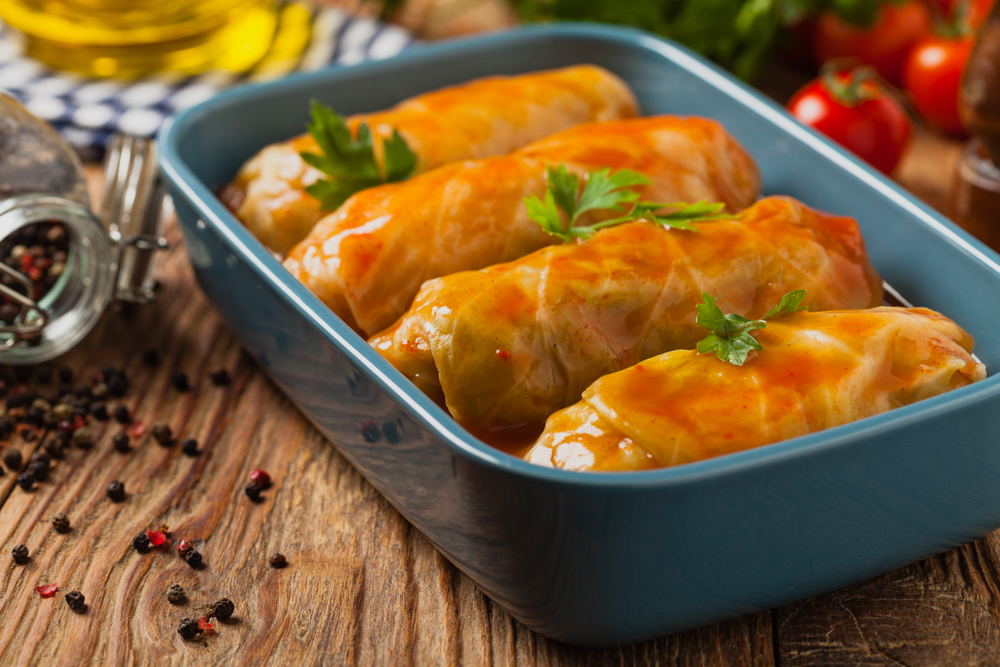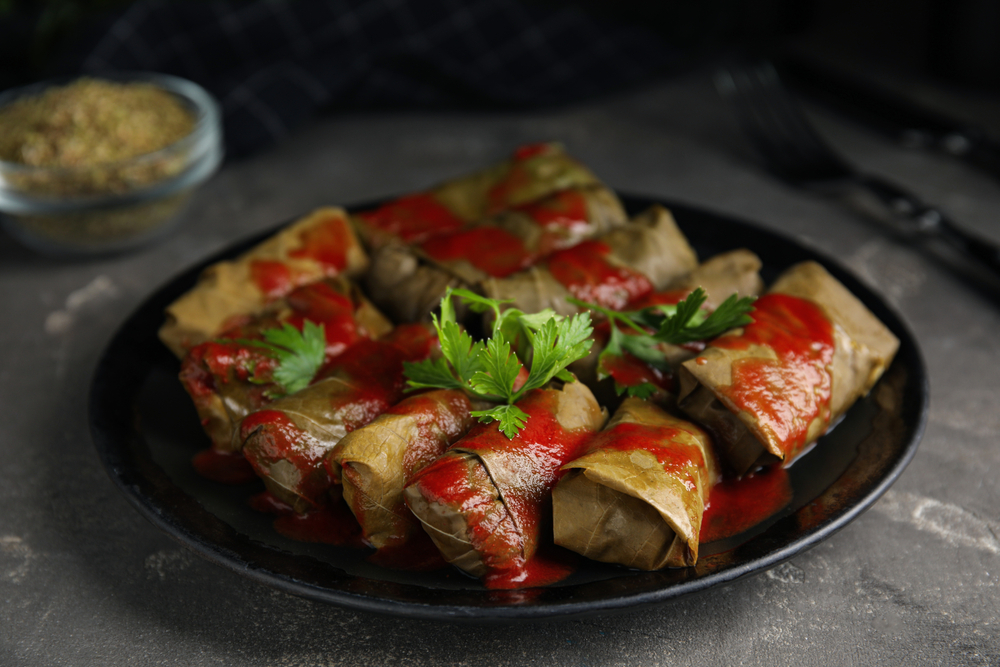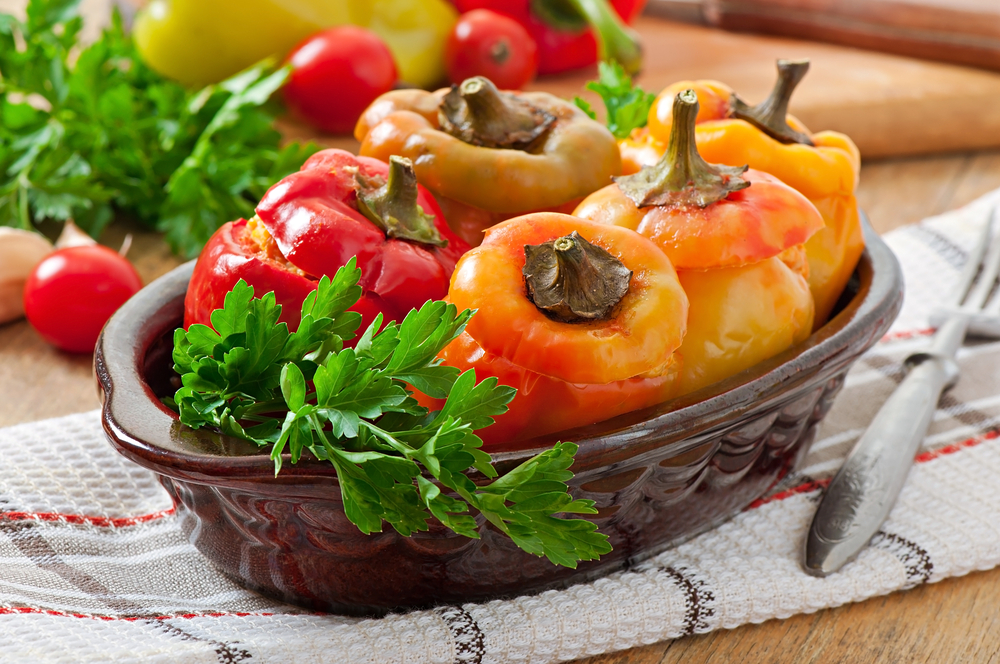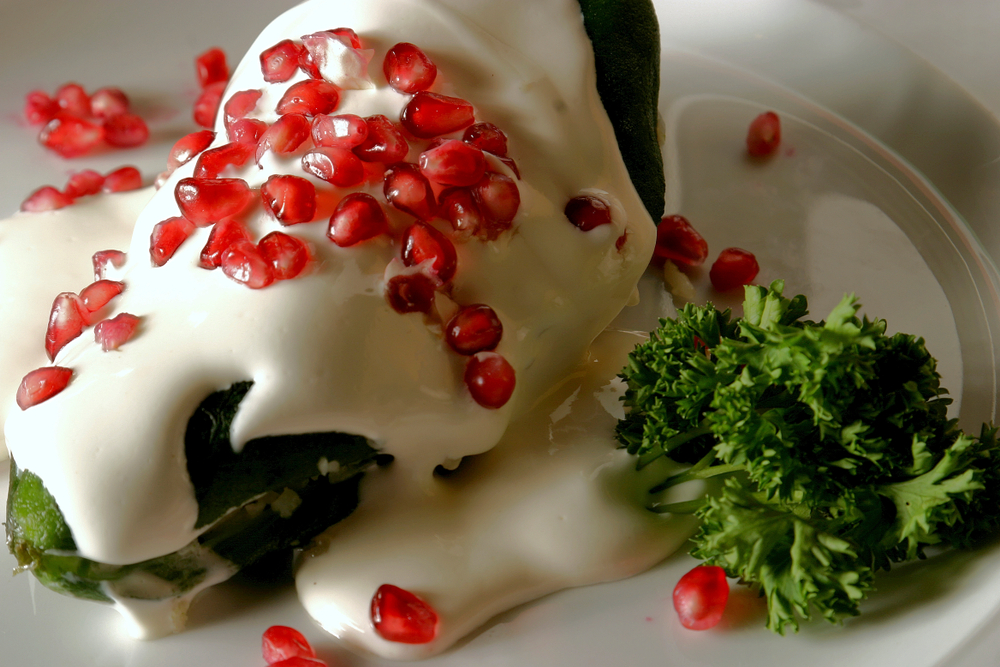Stuffed in the Sukkah
All Jewish Holidays have specific foods and traditions associated with them. Hanukkah brings to mind sufganiyot and latkes. Pesach an array of unleavened delicacies and matzah. Sukkot is no different.
by Shoshana Isaacson
UNORTHOBOXED Magazine Food Editor
Wherever a Sukkah is built and people gather for a meal inside of it there are recipes that reflect the ancestry or location of those celebrating. In the same way that the Sukkah takes on a local style and ambiance, yet remains within the halachic boundaries of construction, so do the foods served. Two things that all foods served in a Sukkah have in common are their ability to be easily carried from kitchen to Sukkah and their representation of the bounty from the land and the harvest.
Another commonality is that many of the foods served are stuffed. This is not as random as it may seem. One answer often given when asked “Why do we eat stuffed ______ on Sukkot?” is that the stuffed foods represent the brachot and blessings Hashem has bestowed upon and wrapped us in.
Ashkenazi Jews of Eastern European descent have a custom to eat stuffed cabbage on Hoshana Rabbah/Shmini Atzeret. This is not just happenstance. Rabbi Yehuda Shurpin of Chabad.org explains that on Hoshana Rabbah we recite as part of the hoshanot “the words ‘kol mevasser, mevasser v’omer ‘ (”the voice of the herald [Elijah the Prophet] heralds and says”)…”Since, in German, cabbages are called ‘kohl’ and water is ‘vasser’, there arose a custom to eat cabbages cooked in water (kohl mit vasser) on Hoshana Rabbah to celebrate the kol mevasser.”
Thus, the eating of stuffed cabbage. There is also a play on words with the Hebrew words for cabbage כרוב (keruv) and the word for blessed ברוך being constructed from the same letters; as well as keruv being a homonym for the Hebrew word for Cherub (the heavenly beings that stood watch over the Ark of the Covenant). An additional reason often quoted is that rolled, stuffed foods represent the rolled scrolls of the Torah.
As mentioned above the assortment of traditional foods eaten in the Sukkah is broad and varies from continent to continent. Jews of Ashkenazic descent eat stuffed cabbage regardless of where they reside today. In Mexico, as in all places our landsmen reside, the foods have taken on a truly Mexican flare. Festival Chiles Rellenos de Picadillo Jewish Style or Chiles Rellenos de Queso are two such recipes. In Morocco there are flaky pastilla and in Greece stuffed grape leaves filled with either seasoned meat and rice or a vegan version with only the rice. Families from Iran may enjoy Dolemeh Felfel, Persian stuffed bell peppers, or Dolemeh-ye Bademjan, stuffed eggplant.
Wherever your Sukkah is built, may it be filled with family, guests, simcha, and bracha; and lots of delicious food!
Grandma’s Stuffed Cabbage
(meat, vegan)
Ingredients
- 2 lbs ground beef/lamb or vegan alternative
- 1/2 cup uncooked rice, white or brown
- 2 eggs or vegan egg substitutes (flax or aquafaba)
- 2 onions, grated
- salt and pepper, to taste
- 20-24 large cabbage leaves
- 2 28oz cans whole or crushed tomatoes
- 1 1/2 cups brown sugar
- 1 cup raisins
- 2 28oz cans tomato sauce
- 1 lb sauerkraut, drained

Step by Step Instructions
Step 1
- Blanch cabbage leaves in boiling water for two to three minutes or alternatively wrap the head of cabbage in microwave-safe plastic wrap and microwave for 10 minutes. Run under cold water until the leaves are manageable. Set aside.
Step 2
In a bowl combine the ground meat/meat alternative with the uncooked rice, eggs, and the grated onion. Season to taste with salt and pepper. Set aside.
Step 3
In a second bowl mix the canned tomatoes (breaking them apart if you are using whole tomatoes), brown sugar, raisins, tomato sauce and drained sauerkraut. Set aside. Prepare your blanched cabbage leaves by trimming the thick center vein using a vegetable peeler. Lay a large leaf on your work surface and place one or two tablespoons of the filling in the center of the stem end. Roll over once and then fold the sides over toward the middle and continue rolling until completely sealed (similar to rolling an eggroll). Continue until the filling has been used up.
Step 4
Any leftover unused cabbage can be chopped and added to the sauce. This can be cooked on the stovetop in a Dutch oven, in the oven in a baking dish or in a slow cooker.
Step 5
Pour a small amount of the sauce over the bottom of the pot of your choice, enough to coat the bottom well.
Step 6
Make a layer of the cabbage rolls, pour sauce over them.
Step 7
Add an additional layer of cabbage rolls and more sauce.
Step 8
Cook over a medium flame on the stove until the sauce begins to boil. Reduce the heat to a simmer and cook for 2 or more hours.
Vegan Dolmas – Stuffed Grape Leaves
(vegan)
Ingredients
- 1/2 cup pine nuts
- 1 1/2 cups long grain white rice
- 1 medium onion, minced
- 1/2 cup fresh dill, minced
- 1/4 cup fresh mint, minced
- 2 tablespoons plus ¼ cup lemon juice
- 1 tablespoon lemon zest
- 1 3/4 cups vegetable broth, divided (Imagine brand Low Sodium Vegetable Stock works really well)
- 1 large jar of grape leaves
- salt and pepper
- 1/2 cup extra virgin olive oil

Step by Step Instructions
Step 1
Toast the pine nuts in a skillet over medium heat till golden brown. Set aside.
Step 2
Pour ¼ cup of olive oil into a medium-sized pot and heat it over a medium flame. Add the minced onion and sauté until soft.
Step 3
Add the rice and stir to combine. Sauté for one minute.
Step 4
Pour in ¾ cups of the vegetable broth and lower the heat; simmer the rice uncovered for about 10 minutes till the liquid is absorbed and the rice is half cooked.
Do not cook the rice fully, or you’ll end up with mushy grape leaves!
Step 5
Remove pot from heat.
Step 6
Add the dill, mint, toasted pine nuts, 2 tablespoons lemon juice, and lemon zest to the pot of rice. Stir the ingredients to combine well. Season with salt and pepper.
Step 7
Let the mixture cool to room temperature.
Step 8
Open your jarred grape leaves and rinse them well. Separate the larger leaves carefully from the small ones. Use the smaller leaves to line the bottom of a stock pot.
Step 9
Trim off any tough stems from the larger leaves and pat them dry as you place them one at a time smooth side down, vein side up, on a cutting board.
Step 10
Place 2 tablespoons of the rice filling at the end of the leaf, near where the stem was. Fold the leaf as you would a cabbage leaf or an eggroll until the leaf forms a neat roll. Do not roll too tightly or the rice will expand too much, causing the roll to unravel while cooking.
Step 11
Set the rolled grape leaf into the prepared stock pot along the edge forming a ring around the inside of the pot. The rolls should be packed in tightly to help prevent unrolling.
Step 12
Make a single layer in the bottom of the pot and then a second layer on top of the first if needed.
Step 13
Pour 1 cup of broth, ¼ cup of olive oil, and ¼ cup of lemon juice over the stuffed grape leaves. Heat the pan over medium until it begins to simmer. DO NOT boil!
Cover the pot. Simmer the rolled grape leaves for 30-40 minutes.
Step 14
When the rolls are fork tender, they are finished cooking. You can set them aside to cool or serve hot.
They will remain fresh for about 1 week in an airtight container in the refrigerator.




